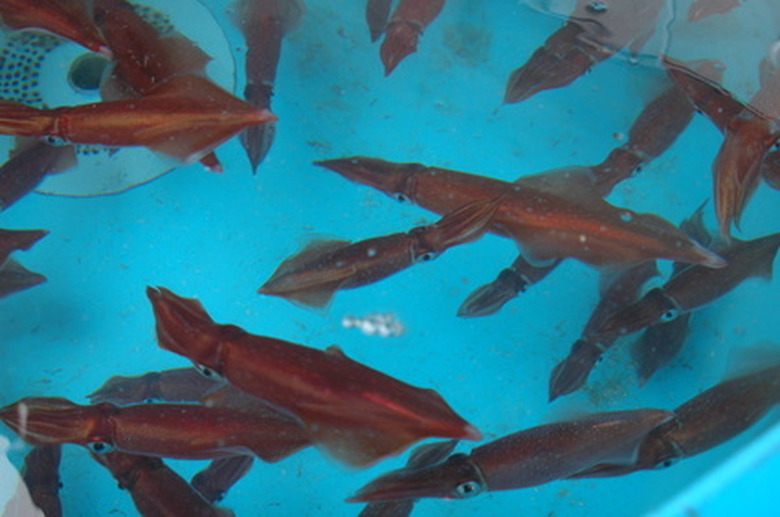Squid Adaptation
Squids are among the most abundant cephalopods on the planet, found from the deepest oceans to the shallow seas. These creatures, which are grouped with octopi and cuttlefish, employ numerous adaptations in the wild to survive, from unique body shapes to specialized limbs.
Torpedo-Shaped Bodies
Torpedo-Shaped Bodies
Squid have torpedo-shaped bodies, like rockets, that make them extremely aerodynamic. They suck in water through a tube and then expel it, propelling them through the seas and allowing them to escape from dangerous predators like sharks, dolphins, sea turtles, seals and even humans, who hunt squid for their commercially sold meat.
Ink
Ink
Like their octopus cousins, squid produce ink and keep it in an ink sac near their rectum. When threatened, squid can expel this ink in the face of a predator, confusing it and allowing it to escape. This ink expulsion is commonly combined with its quick getaway abilities.
Big Eyes
Big Eyes
Squids have among the largest eye size to body size ratio in the entire animal kingdom. In fact, the eyes of Architeuthus dux, the giant squid, can get to be as large as a dinner plate. Squids use these large eyes to bring in as much light as possible at night, when they often hunt, and to see in the depths of the deep seas where no sunlight reaches.
Tentacles
Tentacles
Squids have 10 tentacles protruding from the base of their elongated torpedo-bodies. All of these arms are lined with suction cups, usually with small hooks embedded in their centers. Two of the squid's arms are over four times the length of the other arms and are used to catch fish and other prey; they shoot out like grappling hooks and grab a prey item, then quickly reel it in back toward their mouths.
Beaks
Beaks
Squids have powerful beaks, like parrot beaks, centered at the base of their heads in between their tentacles. These beaks are extremely powerful and are used not only to chew food but to crush crab and mollusk shells, making them easier to swallow.
Cite This Article
MLA
Shields, Brenton. "Squid Adaptation" sciencing.com, https://www.sciencing.com/squid-adaptation-6702420/. 22 November 2019.
APA
Shields, Brenton. (2019, November 22). Squid Adaptation. sciencing.com. Retrieved from https://www.sciencing.com/squid-adaptation-6702420/
Chicago
Shields, Brenton. Squid Adaptation last modified March 24, 2022. https://www.sciencing.com/squid-adaptation-6702420/
